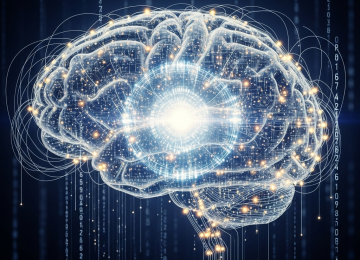AI Drummer: New AI Learns Rock Drumming, Needs More Practice
The world of music creation is rapidly evolving, and the latest breakthrough comes in the form of an AI drummer capable of learning and performing rock music. While this development is undeniably exciting, our analysis suggests this particular AI still has a significant ways to go before it can truly rival human drummers.
- What is the AI Drummer?
- How Does it Learn?
- Strengths of the AI Drummer
- Areas for Improvement
- The Future of AI in Music
- Comparing AI to Human Drummers
- Impact on the Music Industry
What is the AI Drummer?
This innovative AI system has been developed with the ambitious goal of replicating the complex and nuanced art of rock drumming. Researchers have been working to train the algorithm on vast datasets of rock music, analyzing everything from the rhythmic patterns and stylistic choices to the subtle variations in timing and dynamics that define a great performance.
The aim is not just to create a machine that can simply hit drums in time, but one that can understand the feel, groove, and emotional expression inherent in rock drumming. This involves deciphering the interplay between the kick drum, snare, hi-hat, and cymbals, as well as incorporating fills and stylistic flourishes that make rock music so engaging.
How Does it Learn?
The learning process for this AI drummer is a sophisticated one. It involves machine learning techniques, primarily deep learning, where the AI is exposed to an extensive library of recorded drum performances. These performances are analyzed to extract key musical features, such as tempo, rhythmic complexity, drum hit velocity, and the overall energy of the performance.
One of the key challenges is teaching the AI to understand musical context. Rock drumming isn’t just about playing a sequence of notes; it’s about responding to the other instruments in the band, building tension, and providing a solid foundation for the song. The AI is fed information about song structure, chord progressions, and even vocal melodies to help it learn these contextual nuances.
Furthermore, the AI likely utilizes reinforcement learning, where it receives feedback on its performance. This could involve a human expert or another sophisticated algorithm assessing its accuracy, musicality, and adherence to the genre’s conventions. Through trial and error, and continuous refinement of its internal models, the AI gradually improves its drumming capabilities.
The data used for training is crucial. High-quality recordings of renowned rock drummers across different eras and subgenres are fed into the system. This allows the AI to learn a diverse range of styles, from the driving beats of classic rock to the more intricate patterns found in progressive rock.
Strengths of the AI Drummer
Despite its need for further development, this AI drummer exhibits several promising strengths. Firstly, its precision and consistency are remarkable. Once trained, an AI can execute a drum pattern with absolute accuracy, maintaining a perfect tempo and never missing a beat. This level of unwavering reliability is something even the most disciplined human drummer might struggle with over extended periods.
Secondly, the AI‘s ability to process and learn from vast amounts of data is unparalleled. It can absorb the intricacies of countless drum performances in a fraction of the time it would take a human to even listen to them. This allows for rapid iteration and the exploration of novel rhythmic possibilities that might not have occurred to human musicians.
Another significant advantage is the AI‘s potential for unlimited endurance. It doesn’t experience fatigue or require breaks, making it ideal for long recording sessions or situations where continuous, high-energy drumming is needed. This could be a game-changer for producers and musicians working on demanding projects.
The AI can also be programmed to generate highly specific drum parts based on detailed parameters. Need a drum beat in the style of John Bonham but with a slightly different snare accent? An AI could potentially generate that with remarkable fidelity, offering a level of customization that is difficult to achieve with human drummers alone.
Moreover, the AI‘s capacity to learn and adapt is continually improving. As more data is fed into the system and its algorithms are refined, its understanding of musicality and its ability to generate authentic-sounding rock drumming will undoubtedly increase.
Areas for Improvement
While the progress of this AI drummer is impressive, there are clear areas where it falls short of human proficiency. The most significant challenge lies in its lack of genuine feel and groove. Rock drumming is not just about playing the right notes; it’s about the subtle push and pull against the beat, the dynamic variations in intensity, and the human element that breathes life into a performance.
Currently, the AI often produces drumming that can sound too robotic or sterile. It may struggle with the nuanced phrasing, the “ghost notes” on the snare that add texture, or the intentional slight imperfections that make a human drummer’s performance feel dynamic and engaging. This emotional depth and intuitive understanding of musicality are incredibly difficult to replicate with algorithms alone.
Another area for improvement is the AI‘s ability to improvise and react in real-time. While it can follow pre-programmed patterns, spontaneous musical interaction and creative improvisation are core to human drumming. A human drummer can listen to the rest of the band and spontaneously create a drum solo or adapt their playing based on the live energy of a performance. The current AI likely lacks this level of adaptive creativity.
Furthermore, the AI‘s understanding of musical context and song structure, while improving, is still a work in progress. It may not always make the most musically appropriate choices for fills or transitions, or it might not effectively build tension and release within a song in the same way a seasoned human drummer would. This requires a deeper, more intuitive grasp of musical narrative.
The AI‘s learning process also needs to encompass more subtle aspects of drumming, such as cymbal chokes, intricate hi-hat footwork, and the percussive sounds made by striking different parts of the drum kit. These details contribute significantly to the overall character of a rock drumming performance.
The Future of AI in Music
The development of this AI drummer is just one example of how AI is transforming the music industry. Beyond drumming, AI is being used to compose music, generate lyrics, master tracks, and even create entirely new musical genres. For instance, tools like Amper Music and Jukebox by OpenAI are already demonstrating the potential of AI in creative music production.
The ongoing advancements in machine learning and artificial intelligence suggest that AI-powered musical instruments and tools will become increasingly sophisticated. We can anticipate AI systems that can collaborate more organically with human musicians, offering creative suggestions, generating complex arrangements, and even performing alongside bands.
As these technologies mature, the lines between human creativity and artificial intelligence will continue to blur. This raises fascinating questions about authorship, originality, and the very definition of art. However, the potential benefits for musicians, producers, and aspiring artists are immense, offering new avenues for exploration and creation.
It’s important to note that the development of AI in music is not necessarily about replacing human artists but rather about augmenting their creative processes. Think of AI as a powerful new instrument or a highly intelligent assistant that can help bring musical ideas to life in new and exciting ways.
Comparing AI to Human Drummers
When comparing the capabilities of this AI drummer to human drummers, several key distinctions emerge. While the AI excels in technical precision and consistency, human drummers bring an intangible element of artistry, emotion, and personality to their performances. This includes the subtle variations in timing, the dynamic nuances, and the sheer passion that a human performer imbues into their playing.
Human drummers learn through years of practice, listening, and collaboration, developing an intuitive understanding of music that goes beyond algorithmic processing. They can feel the energy of a live audience, adapt their playing on the fly, and inject their own unique creative voice into every beat. This organic, lived experience is something that current AI systems are still striving to replicate.
The ability to improvise is another significant differentiator. A skilled human drummer can spontaneously create intricate solos, respond to unexpected changes in a song, and engage in a musical dialogue with other band members. While AI can be programmed to generate variations, true improvisational creativity, driven by emotion and intuition, remains a distinctly human domain for now.
Furthermore, the tactile and physical connection a human drummer has with their instrument is integral to their performance. The way they strike cymbals, hit drumheads with varying force, and move their bodies to the rhythm are all part of the expressive language of drumming. Replicating this physical artistry and intention in an AI is a complex challenge.
Ultimately, the value of a human drummer lies not just in their technical ability but in their ability to connect with an audience on an emotional level, to convey stories through rhythm, and to be an integral part of a collaborative musical ecosystem. For a deeper dive into the art of drumming, you might find this article on [The Evolution of Drumming Techniques](https://www.funtimesus.com/blog/evolution-of-drumming-techniques) interesting.
Impact on the Music Industry
The development of sophisticated AI drummers, alongside other AI music tools, is poised to have a significant impact on the music industry. For independent musicians and small production studios, these technologies can offer affordable access to high-quality drumming that might otherwise be cost-prohibitive. This democratizes music creation, enabling more artists to produce professional-sounding tracks.
In the realm of game development and film scoring, AI drummers could provide dynamic and adaptive soundtracks that respond to on-screen action, creating more immersive experiences. The ability to generate endless variations of drum loops and patterns also opens up new possibilities for music producers looking for inspiration or specific sonic textures.
However, this technological advancement also raises questions about the future of session musicians, including drummers. As AI becomes more capable, the demand for human session drummers for certain types of projects might decrease. This necessitates a conversation within the industry about how to adapt and ensure that human creativity and artistry remain valued.
Furthermore, the legal and ethical implications of AI-generated music, including copyright and ownership, are still being explored. As these systems become more sophisticated, the music industry will need to establish clear guidelines and frameworks to address these emerging challenges. The accessibility of tools like this AI drummer, detailed in reports from leading tech journals like [TechCrunch](https://techcrunch.com/), is accelerating these discussions.
The future likely holds a hybrid model, where AI tools augment, rather than entirely replace, human musical talent. The most successful musicians and producers will be those who can effectively leverage these new technologies to enhance their creative vision and push the boundaries of what’s possible in music creation.















